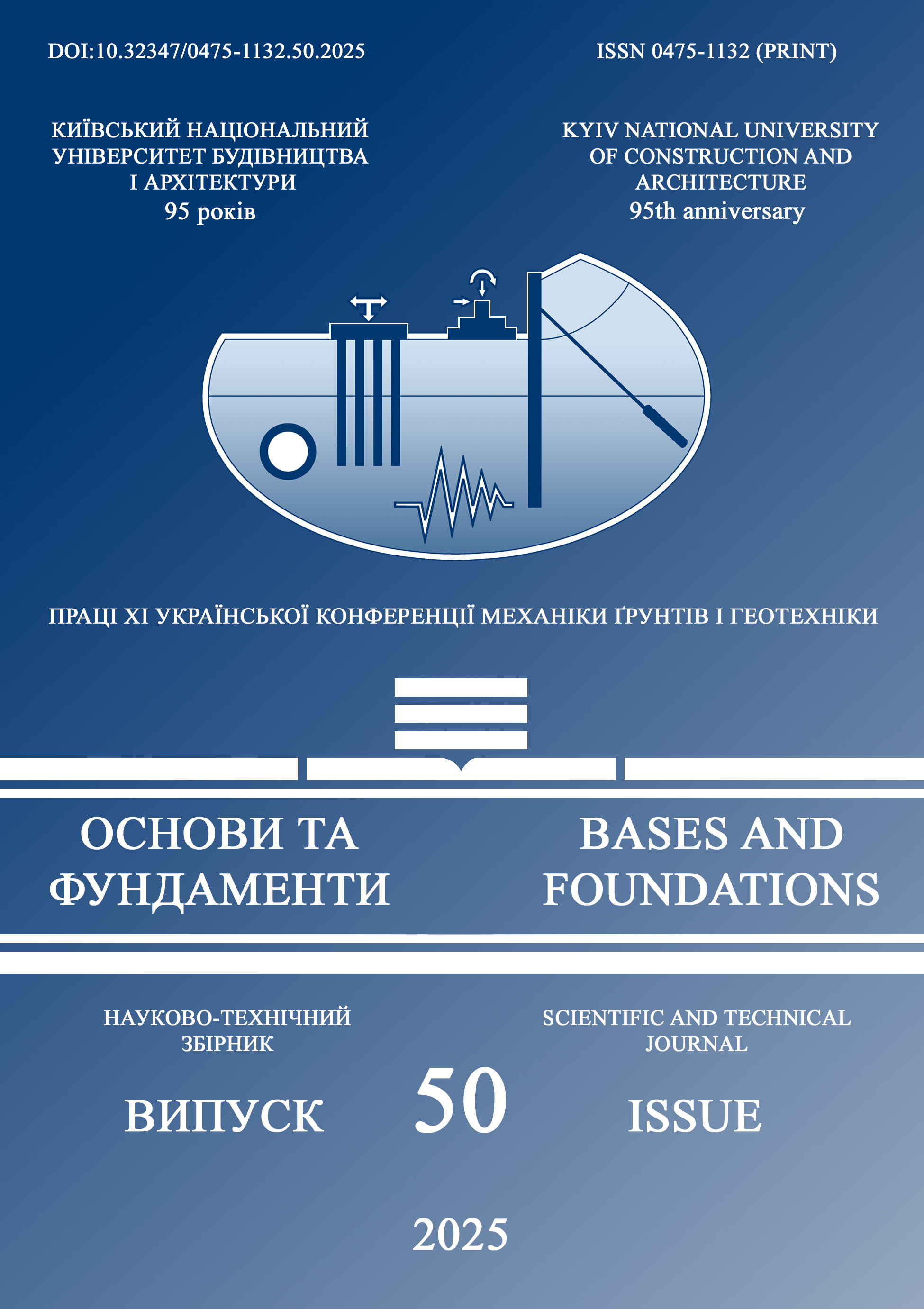Імовірнісний аналіз сейсмічної небезпеки: досвід та перспективи виконання в Україні
Основний зміст сторінки статті
Анотація
Прагнення України інтегруватися у світовий політичний та економічний простір передбачає перехід на міжнародні стандарти.
Вимоги міжнародних нормативних документів щодо оцінки сейсмічності відрізняються від вітчизняних нормативів.
Крім того, підхід оцінки сейсмічної небезпеки в балах і наступний перехід до параметрів руху ґрунту, викликає багато запитань з боку закордонних фахівців, які виконують роль міжнародних експертів робіт з вишукувань при проектуванні об’єктів з іноземними інвестиціями, наприклад хвостосховищ гірничо-збагачувальних комбінатів, або об’єктів з міжнародним аудитом, наприклад АЕС. Ще більш актуальним це питання може виявитись у період післявоєнного відновлення України, коли для розбудови будуть залучені кошти інших країн.
Виконання міжнародних вимог передбачає проведення імовірнісного аналізу сейсмічної небезпеки (ІАСН) при проектуванні і експлуатації АЕС, великих гідротехнічних споруд, до яких відносяться об’єкти гідроенергетики та огороджувальні дамби хвостових господарств гірничо-збагачувальних комбінатів.
В Україні найбільший досвід виконання ІАСН наявний для об’єктів атомної енергетики. За участю авторів для АЕС розроблено максимально змістовна методика і програми виконання ІАСН з урахуванням геологічних, тектонічних і сейсмологічних умов України. Слід зазначити, що основні методичні положення, розроблені для АЕС, з успіхом можуть бути використані і для виконання ІАСН інших об’єктів підвищеного класу відповідальності.
Основною метою виконання ІАСН є: оцінка пікових прискорень ґрунту і отримання узагальнених спектрів відгуку для рівня проектного (ПЗ) и максимального розрахункового землетрусів (МРЗ).
ІАСН виконується на основі інтегрованої бази, що містить результати геологічних, геофізичних, геоморфологічних, тектонічних, інженерно-геологічних та сейсмологічних досліджень.
Ключовим елементом успішного виконання ІАСН є оцінка невизначеностей у вихідних даних. Характеристика вихідних даних і їх невизначеностей базується на наявній інформації.
Блок інформації про статтю

Ця робота ліцензується відповідно до Creative Commons Attribution 4.0 International License.
Автори, які публікуються у цьому журналі, погоджуються з наступними умовами: Автори залишають за собою право на авторство своєї роботи та передають журналу право першої публікації цієї роботи на умовах ліцензії Creative Commons Attribution License, котра дозволяє іншим особам вільно розповсюджувати опубліковану роботу з обов'язковим посиланням на авторів оригінальної роботи та першу публікацію роботи у цьому журналі. Автори мають право укладати самостійні додаткові угоди щодо неексклюзивного розповсюдження роботи у тому вигляді, в якому вона була опублікована цим журналом (наприклад, розміщувати роботу в електронному сховищі установи або публікувати у складі монографії), за умови збереження посилання на першу публікацію роботи у цьому журналі. Політика журналу дозволяє і заохочує розміщення авторами в мережі Інтернет (наприклад, у сховищах установ або на особистих веб-сайтах) рукопису роботи, як до подання цього рукопису до редакції, так і під час його редакційного опрацювання, оскільки це сприяє виникненню продуктивної наукової дискусії та позитивно позначається на оперативності та динаміці цитування опублікованої роботи (див. The Effect of Open Access).Посилання
Gupta, I. D. (2007). Probabilistic seismic hazard analysis method for mapping of spec-tral amplitudes and other design-specific quantities to estimate the earthquake effects on man-made structures. ISET Journal of Earthquake Technology, 44(1), 127-167.
Akkar, S., & Bommer, J. J. (2010). Empirical equations for the prediction of PGA, PGV, and spectral accelerations in Europe, the Mediterranean region, and the Middle East. Seismological Research Letters, 81(2), 195-206.
Field, E. H., Jordan, T. H., & Cornell, C. A. (2003). OpenSHA: A developing communi-ty-modeling environment for seismic hazard analysis. Seismological Research Let-ters, 74(4), 406-419.
Pagani, M., Monelli, D., Weatherill, G., Dan-ciu, L., Crowley, H., Silva, V., ... & Vigano, D. (2014). OpenQuake engine: An open hazard (and risk) software for the global earthquake model. Seismological Research Letters, 85(3), 692-702.
Bender, B., & Perkins, D. M. (1987). SEISRISK III: a computer program for seismic hazard estimation (No. 1772). US Government Printing Office.
ERN — Earthquake Hazard Program [Елек-тронний ресурс]: https://ern.com.mx/web/
Ordaz, M., & Salgado-Gálvez, M. A. (2017). R-CRISIS validation and verification docu-ment. Instituto de Ingeniería—Universidad Nacional Autónoma de México & Evalu-ación de Riesgos Naturales: Mexico City, Mexico.
Schnabel, P. B. (1972). SHAKE, a computer program for earthquake response analysis of horizontally layered sites. Report No. EERC 72-12, University of California, Berkeley.
Stewart, J. P., Afshari, K., & Hashash, Y. M. (2014). Guidelines for performing hazard-consistent one-dimensional ground response analysis for ground motion prediction. PEER report, 16, 117.
Seed, H. B., Wong, R. T., Idriss, I. M., & Tokimatsu, K. (1986). Moduli and damping factors for dynamic analyses of cohesionless soils. Journal of geotechnical engineer-ing, 112(11), 1016-1032.
